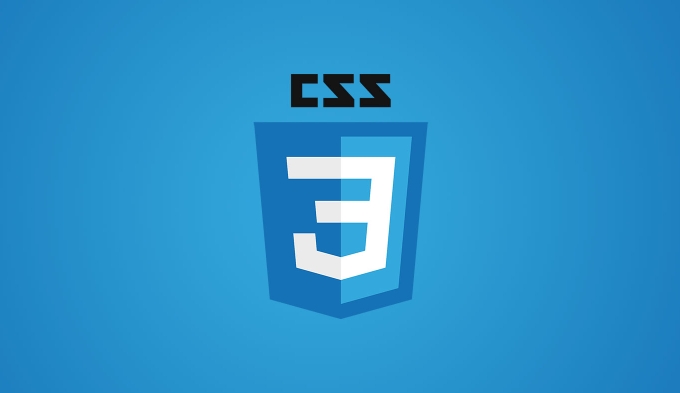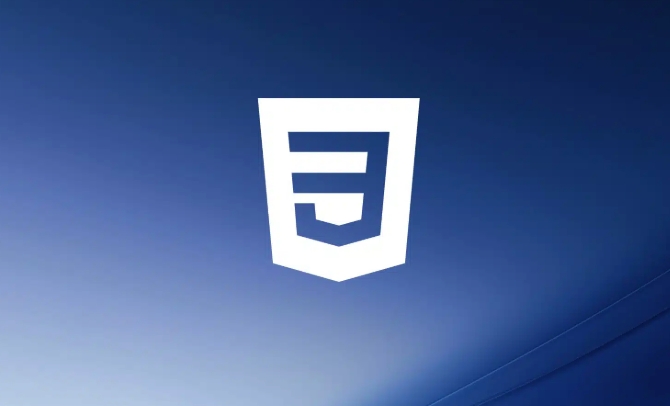What are the basics of a CSS tutorial for absolute beginners?
Jun 30, 2025 am 01:08 AMBeginners of CSS should first understand how they collaborate with HTML, master the CSS rules and structure, learn text and color styles, and understand the basics of layout. The article points out that HTML builds a web structure, and CSS is responsible for visual styles, connecting CSS and HTML through link tags; CSS rules are composed of selectors and declaration blocks; common attributes include color, font, alignment, etc.; each element consists of content, inner margins, borders, and outer margins to form a box model, and the display type can be controlled through block, inline, and inline-block. It is recommended to gradually explore the Flexbox or Grid layout starting from simple margin adjustment.

If you're completely new to CSS, the basics might seem a bit overwhelming at first, but they're actually quite straightforward once you understand how it fits into the bigger picture of web development. CSS (Cascading Style Sheets) is what gives your HTML content its visual style — things like colors, fonts, spacing, and layout. The key is to start small, learn how to connect CSS to HTML, and understand the basic structure of CSS rules.

Understanding How HTML and CSS Work Together
Before diving into styling, it's important to know that HTML provides the structure of a webpage, while CSS controls how that structure looks. Think of HTML as the skeleton and CSS as the skin and clothes.

To use CSS with HTML, you typically link a .css file to your HTML document using the <link> tag inside the section. For example:
<link rel="stylesheet" href="styles.css">
This tells the browser where to find the styling instructions. Alternatively, you can also write CSS directly in your HTML file using the <style> tag or even apply styles inline with the style attribute — but those are less common for larger projects because they make maintenance harder.

Learning the Structure of a CSS Rule
At the heart of CSS is the rule — the basic unit that tells the browser how to style something. A CSS rule consists of a selector and a declaration block , which contains one or more declarations .
Here's a simple example:
p {
color: blue;
font-size: 16px;
}-
pis the selector — it targets all paragraph elements. - The part between
{}is the declaration block. - Each line inside the block is a declaration —
colorandfont-sizeare properties, andblueand16pxare their values.
Getting comfortable reading and writing this syntax is cruel because almost everything else in CSS builds on it.
Style Text and Colors
One of the most common tasks in CSS is changing the appearance of text. You'll often work with properties like:
-
color– sets the text color -
font-family– changes the typeface -
font-size– adjusts how big the text appears -
text-align– controls alignment (left, right, center)
For example:
h1 {
color: #333;
font-family: Arial, sans-serif;
font-size: 24px;
text-align: center;
} Colors can be written in different formats — named colors like red , hex codes like #ff0000 , RGB values ??like rgb(255, 0, 0) , or even HSL. Hex codes are popular because they're compact and precision.
It's also good to remember that not every font you like will be available on every device. That's why it's common to list a few options in font-family , ending with a generic family like sans-serif or serif .
Getting Started with Layout Basics
Once you're comfortable with styling text, the next step is learning how to position elements on the page. Two fundamental concepts here are the box model and display types .
Every element in CSS is essentially a box made up of content, padding, border, and margin. You can adjust these parts individually using properties like padding , border , and margin .
Also, elements behave differently depending on their display value:
-
blockelements (like<div> ) take up the full width and stack vertically.<li> <code>inlineelements (like<span></span>) sit within lines of text and only take up as much space as needed. -
inline-blocklets you control spacing while keeping the inline behavior.
A beginner-friendly way to start laying out content is by using simple margins and padding to space things out, and then later exploring tools like Flexbox or Grid for more advanced layouts.
That's basically all you need to get started with CSS. It's not overly complicated, but there are plenty of small details that make a big difference in how your site looks and behaves. Keep practicing by building small examples, and soon enough, styling web pages will feel second nature.
The above is the detailed content of What are the basics of a CSS tutorial for absolute beginners?. For more information, please follow other related articles on the PHP Chinese website!

Hot AI Tools

Undress AI Tool
Undress images for free

Undresser.AI Undress
AI-powered app for creating realistic nude photos

AI Clothes Remover
Online AI tool for removing clothes from photos.

Clothoff.io
AI clothes remover

Video Face Swap
Swap faces in any video effortlessly with our completely free AI face swap tool!

Hot Article

Hot Tools

Notepad++7.3.1
Easy-to-use and free code editor

SublimeText3 Chinese version
Chinese version, very easy to use

Zend Studio 13.0.1
Powerful PHP integrated development environment

Dreamweaver CS6
Visual web development tools

SublimeText3 Mac version
God-level code editing software (SublimeText3)
 Describe the `vertical-align` property and its typical use cases
Jul 26, 2025 am 07:35 AM
Describe the `vertical-align` property and its typical use cases
Jul 26, 2025 am 07:35 AM
Thevertical-alignpropertyinCSSalignsinlineortable-cellelementsvertically.1.Itadjustselementslikeimagesorforminputswithintextlinesusingvalueslikebaseline,middle,super,andsub.2.Intablecells,itcontrolscontentalignmentwithtop,middle,orbottomvalues,oftenu
 What is the accent-color property?
Jul 26, 2025 am 09:25 AM
What is the accent-color property?
Jul 26, 2025 am 09:25 AM
accent-color is an attribute used in CSS to customize the highlight colors of form elements such as checkboxes, radio buttons and sliders; 1. It directly changes the default color of the selected state of the form control, such as changing the blue check mark of the checkbox to red; 2. Supported elements include input boxes of type="checkbox", type="radio" and type="range"; 3. Using accent-color can avoid complex custom styles and extra DOM structures, and maintain native accessibility; 4. It is generally supported by modern browsers, and old browsers need to be downgraded; 5. Set accent-col
 How to compile SCSS to CSS?
Jul 27, 2025 am 01:58 AM
How to compile SCSS to CSS?
Jul 27, 2025 am 01:58 AM
InstallDartSassvianpmafterinstallingNode.jsusingnpminstall-gsass.2.CompileSCSStoCSSusingthecommandsassinput.scssoutput.css.3.Usesass--watchinput.scssoutput.csstoauto-compileonsave.4.Watchentirefolderswithsass--watchscss:css.5.Usepartialswith_prefixfo
 How to change text color in CSS?
Jul 27, 2025 am 04:25 AM
How to change text color in CSS?
Jul 27, 2025 am 04:25 AM
To change the text color in CSS, you need to use the color attribute; 1. Use the color attribute to set the text foreground color, supporting color names (such as red), hexadecimal codes (such as #ff0000), RGB values (such as rgb(255,0,0)), HSL values (such as hsl(0,100%,50%)), and RGBA or HSLA with transparency (such as rgba(255,0,0,0.5)); 2. You can apply colors to any element containing text, such as h1 to h6 titles, paragraph p, link a (note the color settings of different states of a:link, a:visited, a:hover, a:active), buttons, div, span, etc.; 3. Most
 CSS transitions tutorial
Jul 26, 2025 am 09:30 AM
CSS transitions tutorial
Jul 26, 2025 am 09:30 AM
CSStransitionsenablesmoothpropertychangeswithminimalcode,idealforhovereffectsandinteractivefeedback.1.Usethesyntaxtransition:propertydurationtiming-functiondelay;todefinetransitions,liketransition:background-color0.3sease0.1s;.2.Specifytransition-pro
 How to purge unused CSS?
Jul 27, 2025 am 02:47 AM
How to purge unused CSS?
Jul 27, 2025 am 02:47 AM
UseautomatedtoolslikePurgeCSSorUnCSStoscanandremoveunusedCSS;2.IntegratepurgingintoyourbuildprocessviaWebpack,Vite,orTailwind’scontentconfiguration;3.AuditCSSusagewithChromeDevToolsCoveragetabbeforepurgingtoavoidremovingneededstyles;4.Safelistdynamic
 HTML `style` Tag: Inline vs. Internal CSS
Jul 26, 2025 am 07:23 AM
HTML `style` Tag: Inline vs. Internal CSS
Jul 26, 2025 am 07:23 AM
The style placement method needs to be selected according to the scene. 1. Inline is suitable for temporary modification of single elements or dynamic JS control, such as the button color changes with operation; 2. Internal CSS is suitable for projects with few pages and simple structure, which is convenient for centralized management of styles, such as basic style settings of login pages; 3. Priority is given to reuse, maintenance and performance, and it is better to split external link CSS files for large projects.
 Describe different CSS units and when to use them
Jul 27, 2025 am 04:24 AM
Describe different CSS units and when to use them
Jul 27, 2025 am 04:24 AM
In web development, the choice of CSS units depends on design requirements and responsive performance. 1. Pixels (px) are used to fix sizes such as borders and icons, but are not conducive to responsive design; 2. Percentage (%) is adjusted according to the parent container, suitable for streaming layout but attention to context dependence; 3.em is based on the current font size, rem is based on the root element font, suitable for elastic fonts and unified theme control; 4. Viewport units (vw/vh/vmin/vmax) are adjusted according to the screen size, suitable for full-screen elements and dynamic UI; 5. Auto, inherit, initial and other values are used to automatically calculate, inherit or reset styles, which helps to flexibly layout and style management. The rational use of these units can improve page flexibility and responsiveness.






